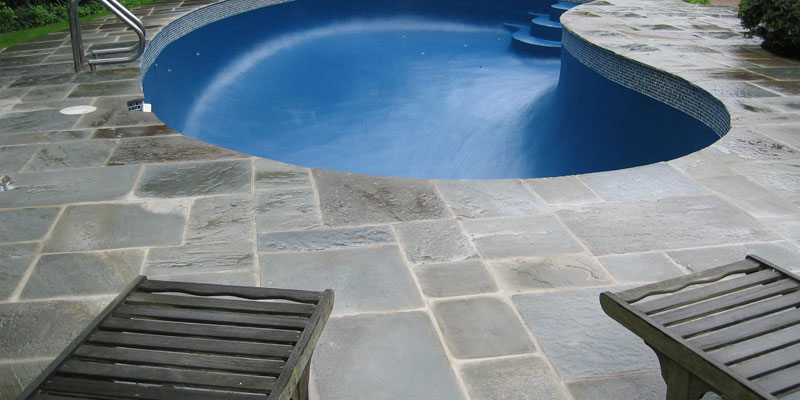
Are you thinking about resurfacing your pool deck? It’s a great way to add value to your home and enjoy your backyard oasis for years to come. But before you dive in, it’s important to understand the costs associated with pool deck resurfacing.
There are several factors that will affect the overall cost of your project, including the size and condition of your existing deck, the type of material you select, and the complexity of the design. While there are many do-it-yourself options available, we recommend working with a professional contractor to ensure a high-quality finish.
In this article, we’ll cover the basics of pool deck resurfacing and help you determine the costs for your specific project.
What is Pool Deck Resurfacing?
Pool deck resurfacing is the process of refinishing an existing concrete or wood pool deck with new material. This can be done for aesthetic reasons, to repair the damage, or to prepare the surface for a new coating or sealant. Depending on the condition of your deck, resurfacing may require some minor repair work before the new surface can be applied.
There are a variety of materials that can be used for pool deck resurfacing, including concrete, stone, pavers, tile, and brick. Each option has its own benefits and drawbacks, so it’s important to select the right material for your needs.
Let’s take a closer look at these materials and the benefits of each:
Concrete: Concrete is the most popular material for pool decks because it’s durable and easy to maintain. It can be stamped, colored, or textured to create a variety of looks, and it’s also relatively affordable. One downside of concrete is that it can crack over time, so it’s important to have any cracks repaired before resurfacing.
Stone: Stone is a luxurious option for pool decks, but it comes with a higher price tag. Stone is very durable and has a natural beauty that concrete can’t match. However, stone can be difficult to install and repair, so we recommend working with a professional contractor if you choose this option.
Pavers: Pavers are a popular choice for pool decks because they’re easy to install and come in a variety of colors and styles. They’re also less expensive than stone, but they’re not as durable as concrete. If you choose pavers for your pool deck, be sure to seal them regularly to prevent staining and fading.
Tile: Tile is a popular choice for pool decks because it’s slip-resistant and comes in a wide range of colors and styles. However, tile can be pricey, and it’s important to choose a material that can stand up to the harsh chemicals in pool water.
Brick: Brick is a classic choice for pool decks, but it’s important to choose a material that’s rated for outdoor use. Brick is very durable, but it can be difficult to repair if it’s damaged.
The costs of pool deck resurfacing will vary depending on the size of your deck, the type of material you select, and the complexity of the design. However, you can expect to spend between $2 and $4 per square foot for most projects.
If you’re considering resurfacing your pool deck, we recommend getting multiple quotes from local contractors to compare prices. Be sure to ask about any discounts or promotions that may be available and get a written estimate before work begins.
Selecting a Resurfacing Contractor
When selecting a contractor, be sure to check their licensing and insurance status to ensure they’re qualified to work in your area. You can also read online reviews and check with the Better Business Bureau to see if there are any unresolved complaints against the contractor.
Once you’ve selected a contractor, be sure to get a written estimate that includes the cost of materials, labor, and any other fees. Be sure to ask about the warranty or guarantee that’s offered on the work.
Preparing for Resurfacing
Once you’ve selected a contractor and scheduled your project, there are a few things you’ll need to do to prepare for resurfacing. First, you’ll need to remove all furniture, rugs, and other items from the pool deck. You should also clean the surface and repair any cracks or damage before work begins.
The day before resurfacing is scheduled to begin, you’ll need to wet down the surface of the pool deck to prevent the new material from drying too quickly.
On the day of resurfacing, be sure to stay off the pool deck until the project is completed. Once the new surface is dry, you can replace any furniture or other items that were removed.
Final Thoughts
If you’re considering resurfacing your pool deck, we hope this article has been helpful. Be sure to select a qualified contractor and get multiple estimates to ensure you get the best possible price. And, if you have any questions, be sure to ask the contractor before work begins. Thanks for reading!
